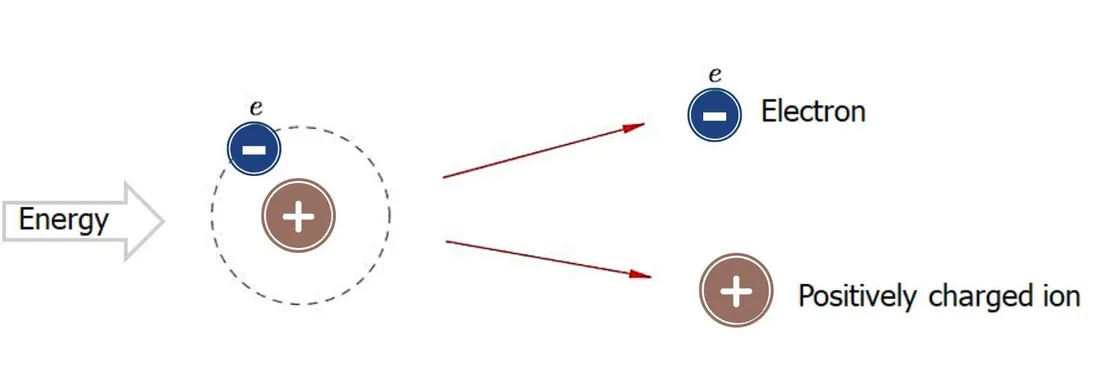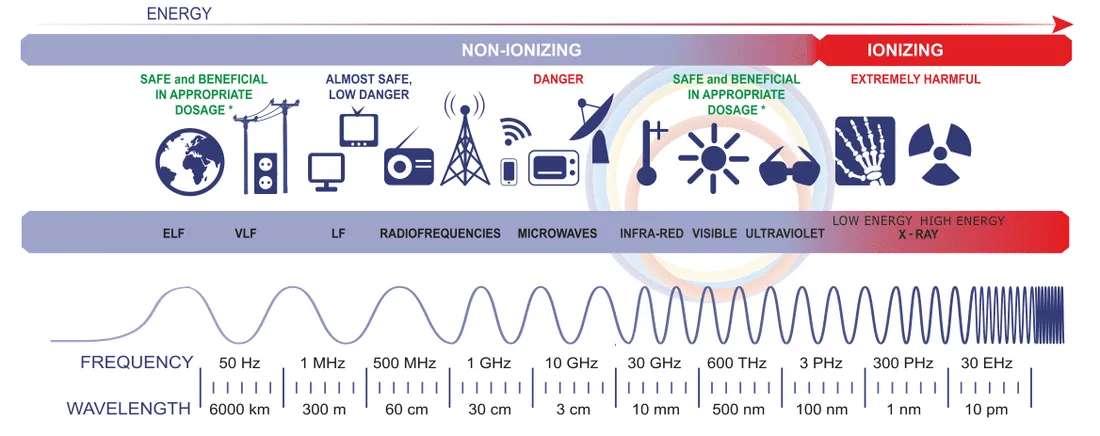Radiation
Radiation can be broadly categorized into two main types:
Electromagnetic Radiation: This encompasses a wide spectrum of waves including:
- Radio Waves: Essential for communication technologies like radio and television,
- Microwaves: Used in cooking and certain communication systems,
- Infrared Radiation: Experienced as heat and utilized in thermal imaging and remote controls,
- Visible Light: The spectrum that is visible to the human eye, allowing us to see the world around us,
- Ultraviolet Radiation: Beyond visible light, used in sterilization, and can cause sunburn,
- X-rays: Penetrating rays that are used in medical imaging to look inside the body,
- Gamma Radiation (γ): High-energy rays from radioactive materials, used in cancer treatment and the nuclear industry.
Particle Radiation: This includes high-energy particles such as:
- Alpha Radiation (α): Heavy particles emitted by some radioactive substances, blocked by paper or skin,
- Beta Radiation (β): High-speed electrons or positrons, penetrate further than alpha particles but are stopped by plastic or glass,
- Neutron Radiation: Neutrons released from nuclear reactions, highly penetrating and best stopped by materials rich in hydrogen.
Non-Ionizing vs. Ionizing Radiation
Radiation can be ionizing and non-ionizing.
Ionization is the process of ion formation from neutral atoms or molecules as a result of the removal or gaining of one or more electrons. Ionization leads to a change in the charge value.
Ionizing radiation is radiation that can ionize a medium, that is, turn neutral atoms and molecules of the medium into particles that have a positive or negative charge (ions).

Considering the points mentioned above, a comparison of ionizing and non-ionizing radiation can be made.
Ionizing Radiation: Powerful enough to ionize atoms by removing electrons, creating ions. This includes X-rays, gamma rays, alpha, beta, and neutron particles. While vital in medical treatments and imaging, ionizing radiation must be handled carefully due to potential health risks.
Non-Ionizing Radiation: Lacks the energy to ionize atoms. This category includes radio waves, microwaves, infrared radiation, visible light, and lower-energy ultraviolet light. Non-ionizing radiation is widely used in everyday technology and is generally considered safer than ionizing radiation.
In everyday life and across various fields such as science, technology, and medicine, the term "radiation" is often used to refer specifically to ionizing radiation. However, this usage is somewhat misleading since "radiation" encompasses all types of radiation. Despite this, the association of "radiation" with ionizing radiation has become so widespread that related terms have become established in scientific contexts. Examples include radiology (the study of medical applications of ionizing radiation), radiation protection (the science of methods for reducing radiation doses to safe levels), and natural radiation background, among others.
